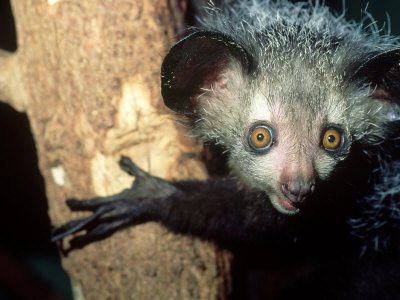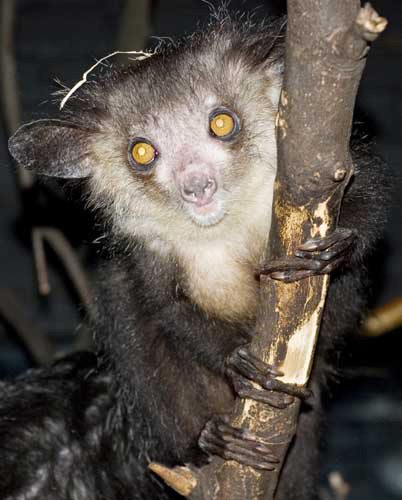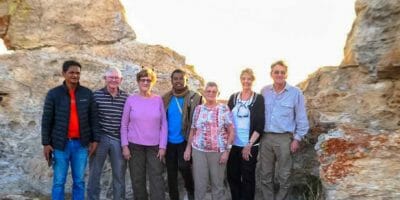At the Tsimbazaza Botanical and Zoological Park (PBZT), in Antananarivo, Madagascar, a baby Aye-aye (Daubentonia madagascariensis) was born on January 24, 1999.

He is doing well and this birth is the result of the Aye-aye protection and breeding project, a project carried out in collaboration with theJapan International Cooperation Agency (JICA) and started in 1992.
To carry out this project, a breeding cage for Aye-aye was built and Aye-aye were captured in the forest of the Manasamody mountain in the northwest of Madagascar. Breeding began in 1993 with two pairs of Aye-aye at PBZT and in January 1999 seven adult individuals were recorded including four males and three females, the newborn constituting the 8th individual of this population.
Between April 1997 and June 1998 three births were observed but the babies were all stillborn. On December 6, 1998, another Aye-aye baby bornbut he was found dead on December 25 of the same year.
It is not easy to carry out captive breeding of the Aye-aye, especially with the conditions prevailing in Madagascar. But the PBZT Staff strive to keep the animals in good conditions and we can hope for another birth this year.
And this will continue.
This project is directly linked to the conservation of the forest around the Manasamody mountain.
It is only in these two forest areas that Aye-aye exists, that is to say in the western regions of Madagascar. In this area, as in other parts of the island, the forest is seriously damaged by fires every year, or rather day after day, the forest is burned and is constantly reduced.



This year, thanks to the friendly relations maintained with the local population, we started activities for the conservation of Aye-aye. The first stage consists of the study of the distribution of Aye-aye, the state of the remaining natural forest and the situation of local farmers, particularly with regard to the supply of water for household uses and agriculture. For these studies, a base camp is being built. The same goes for drinking water supply, all this with the assistance of the Japanese Embassy in Madagascar. Furthermore, the PBZT plans to make this forest zone a protected area which will be considered as its annex.











